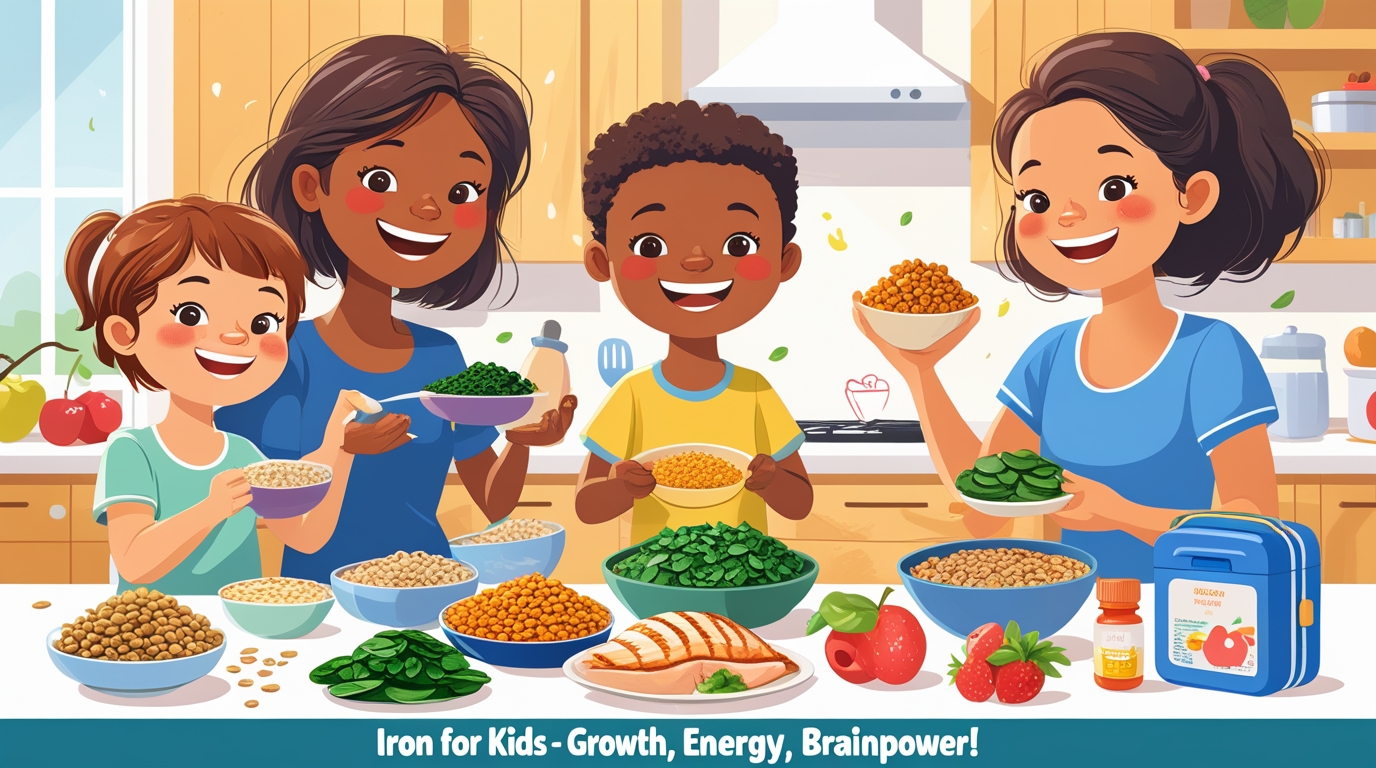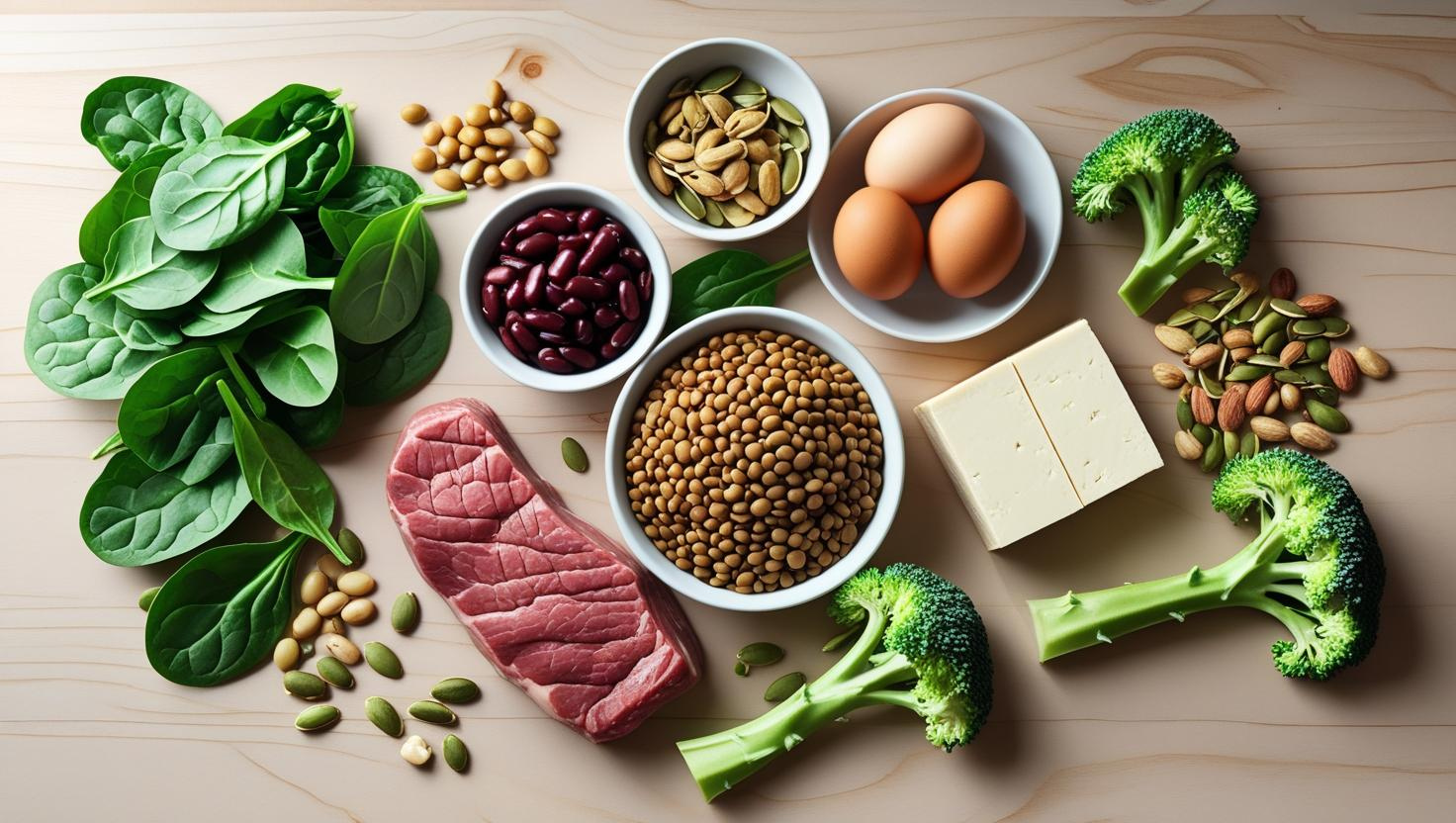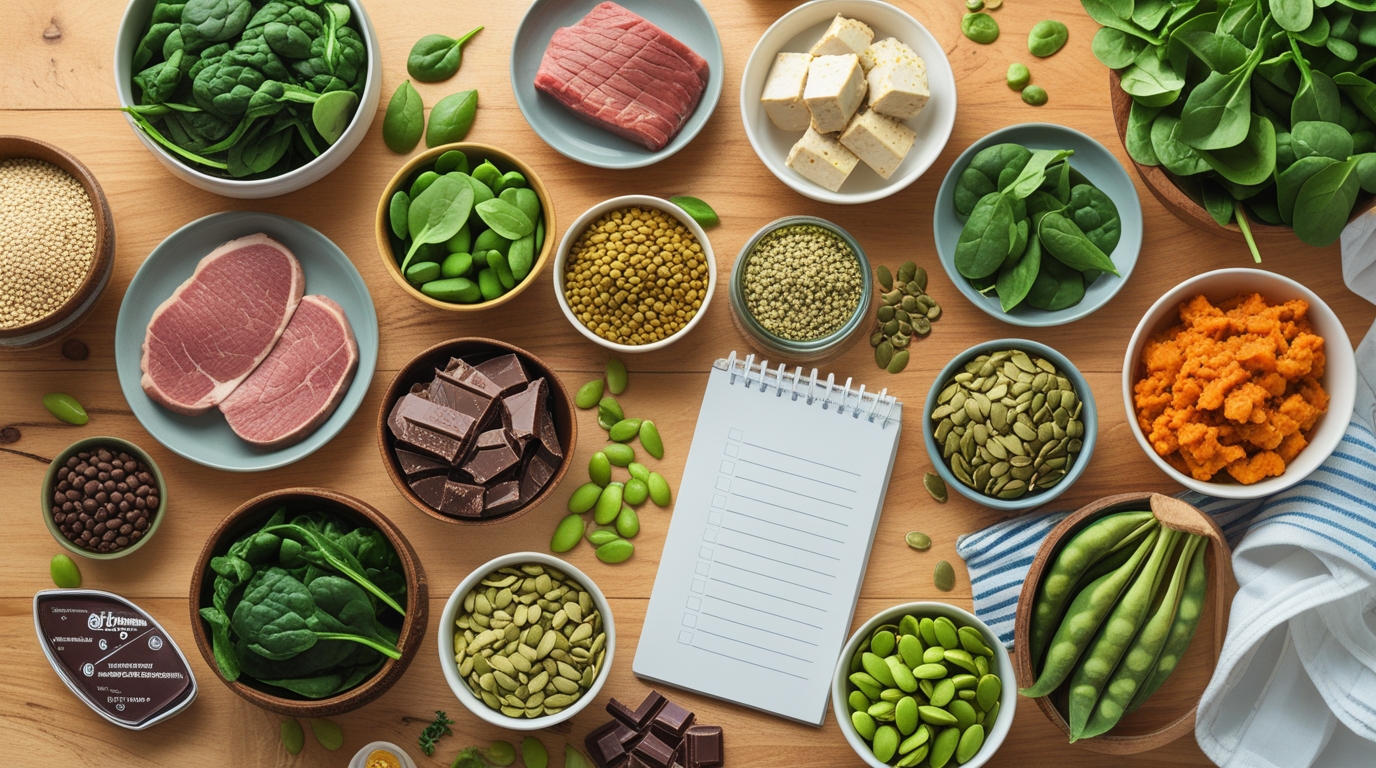Introduction: Why Iron for Kids Is So Important
Iron for kids is a crucial nutrient that supports growth, brain development, and energy levels—especially during the important years of early childhood. In 2025, with rising concerns about picky eating and nutrient deficiencies, understanding iron’s role has never been more important. Many parents are unaware that their child may not be getting enough iron until symptoms such as fatigue or difficulty concentrating appear. This guide will explain why iron matters, how to recognize signs of deficiency, and offer simple, kid-friendly food solutions your child will actually enjoy.
What Is Iron and Why Do Kids Need It?
Hemoglobin, a protein found in red blood cells that transports oxygen throughout the body, is made from iron, a mineral. Iron is particularly crucial for children because:
- It supports physical growth
- It helps with cognitive development
- It keeps energy levels stable
Children who don’t get enough iron may develop anemia or iron deficiency, which can interfere with everyday activities and learning.
Signs of Iron Deficiency in Kids
Here are common symptoms of low iron levels:
- Fatigue or unusual tiredness
- Pale skin
- Poor appetite
- Irritability
- Slow weight gain or growth
- Cold hands and feet
Get your child tested by a pediatrician if they exhibit these symptoms.
Explore more: Iron Deficiency Symptoms in Women – Symptoms may overlap with those in children.
What Happens if Kids Don’t Get Enough Iron?
Iron-deficient children may experience immune system weakness, attention span problems, and developmental delays. Long-term iron deficiency may also affect behavior and intellectual achievement. Preventing more severe problems requires early detection and treatment.
Iron for Kids: How Much Do They Need?
The recommended daily intake of iron varies by age:
| Age Group | Daily Iron Requirement |
| 1–3 years | 7 mg |
| 4–8 years | 10 mg |
| 9–13 years | 8 mg |
| Teenage girls (14–18) | 15 mg |
Teen girls need more iron due to menstruation.
Iron for Kids: Best Sources of Iron
There are two types of dietary iron:
- Heme iron (from animal sources, easily absorbed)
- Non-heme iron (from plant sources, less easily absorbed)
Iron-Rich Animal Foods
- Beef, chicken, and turkey
- Liver (in moderation)
- Fish (like tuna or salmon)
Iron-Rich Plant-Based Foods
- Lentils and beans
- Tofu
- Fortified cereals
- Spinach and broccoli
Note: Combine plant-based iron with vitamin C (like oranges or tomatoes) for better absorption.
Explore more: Iron-Rich Foods
Try this: Iron-Fortified Cereal for Kids on Amazon
Easy Iron-Rich Foods Kids Will Actually Eat
1. Iron-fortified cereal with Strawberries
2. Mini Turkey Meatballs
3. Spinach and Cheese Quesadillas
4. Lentil Soup with Carrot Sticks
5. Tofu Nuggets with Ketchup
6. Homemade Iron Gummies (from molasses + orange juice)
Make cooking colorful and entertaining by letting your children choose the ingredients or by using shapes.
For more ideas on nutritious meals, check out our full guide on Healthy Eating Habits for Children.
Bonus Recipe: Iron-Rich Muffins Kids Will Love
Iron-Boost Banana Muffins
These are soft, sweet, and full of iron—perfect for picky eaters.
Ingredients:
- 1 cup whole wheat flour (iron-rich)
- 1 mashed ripe banana
- 2 tbsp blackstrap molasses (rich in iron)
- 1 egg
- ¼ cup brown sugar
- ¼ cup vegetable oil
- ½ tsp baking soda
- ¼ cup orange juice (vitamin C for better iron absorption)
Instructions:
- Preheat oven to 180°C (350°F) and line a muffin tray.
- Mix all ingredients in a bowl until smooth.
- Fill muffin cups ¾ full.
- Bake for 18–20 minutes until golden and fluffy.
These muffins sneak in iron and pair well with a glass of orange juice for even better absorption!
Preventing Iron Deficiency in Children
- Limit cow’s milk in toddlers (it blocks iron absorption)
- Avoid too much calcium during meals with iron
- Add a vitamin C source with each meal
- Schedule regular blood tests for at-risk children
Should You Give Kids Iron Supplements?
Only give iron supplements if prescribed by a doctor. Too much iron can be harmful. If supplements are needed, take them with fruit juice, not milk.
Explore more: Best Time to Take Iron Supplements
Also read: Vitamin D Guide for Americans, Magnesium Benefits, High Calcium in Blood
Recommended: Children’s Iron Supplement on Amazon – Great-tasting chewables made for kids.
FAQs – Iron for Kids
Q1. What foods are highest in iron for kids?
Excellent sources include beans, tofu, spinach, lentils, beef, and fortified cereals.
Q2. Can too much milk cause low iron in toddlers?
Yes. Excessive milk can interfere with iron absorption and reduce appetite.
Q3. How do I know if my child needs more iron?
Watch for signs such as tiredness or reduced appetite, and consult your pediatrician for a blood test if you’re concerned.
Q4. Are iron supplements safe for kids?
Only if prescribed. Excess iron can be toxic.
Q5. Can picky eaters get enough iron from food?
Yes, with creative recipes and iron-fortified options.
Conclusion
In 2025, making sure kids get enough iron is one of the simplest and most important ways to support their physical and mental development. From iron-rich recipes to smart nutrition habits, a little planning goes a long way. Watch for signs of deficiency early—prevention is always better. For more tips, visit trusted sources like Mayo Clinic and HealthyChildren.org.
Call to Action: Want more kid-friendly nutrition tips? Explore more on Iron Deficiency or Iron Deficiency vs. Anemia, and don’t forget to bookmark us!
Disclaimer: This article is for informational purposes only and is not a substitute for medical advice. Always consult your pediatrician for personalized guidance.
Last Updated: July 8, 2025



